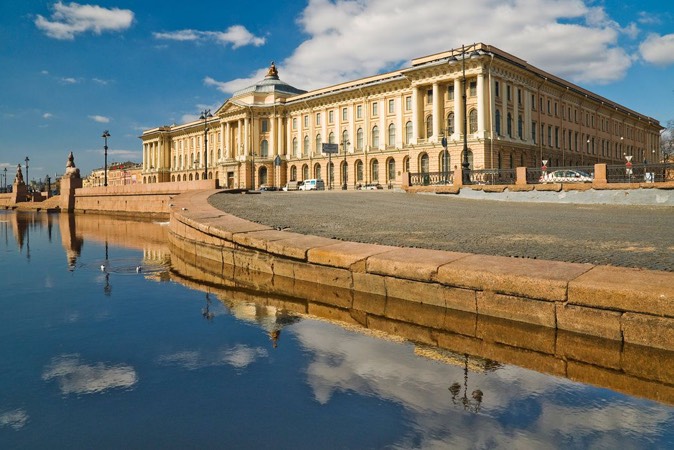Saint Petersburg Academy of Arts
The initiative to create the Academy belonged to Ivan Shuvalov, a close associate of Elizaveta Petrovna. He convinced the Empress of the need to establish an Academy of Arts in Russia following the example of other European countries.
Ivan Ivanovich was going to open a “special three most noble arts academy” in Moscow, at the university he had long conceived. However, by 1757, the Academy of Arts was established in St. Petersburg. Over the next six years, the academy continued to be listed as a branch of Moscow University, while the training of young artists took place in the palace of Ivan Shuvalov himself, in St. Petersburg, on the street Sadovaya.
The first students started their studies in 1758. They had a long, eventful course of nine years ahead. During this time, future masters had to learn the art of engraving, portrait painting, architecture, sculpture and many other artistic disciplines. Two years later, the best students of the Academy were able to go abroad for an internship. Ivan Ivanovich himself paid for the internship.
The Academy received its independent status in 1764, under Catherine II: the charter and “Privileges” of the Academy were approved, the staff was determined and the salaries of teachers were increased. In the same 1764, the construction of a separate building of the Academy began on Vasilyevsky Island. Architects Alexander Filippovich Kokorinov and Jean Baptiste Vallin-Delamotte were entrusted with a responsible task.
By the solemn beginning of construction, three additional piers were built on the Neva River, and ships with noble guests were to dock to them. Teachers and students, dressed in dress uniforms, greeted the Empress accompanied by “trumpets and timpani”. Catherine II herself laid the foundation stone for the future building.
Despite the fact that construction was completed by 1788, the interior decoration lasted until 1817. Shuvalov presented the Academy with his rich library, collections of engravings, paintings and casts from Western European and ancient sculptures. Later, all these items made up the exposition of the first Russian art museum. Today they can be seen in the halls of the Hermitage.
Currently, the Academy is named after Repin, and the building houses the Research Museum of the Russian Academy of Arts, an archive, a library and workshops. By the way, exhibitions of paintings are regularly held in the Italian Hall of the Institute.
Look for all [palaces of St. Petersburg] (https://kudago.com/spb/sights/?type=castles) with addresses, photos and interesting facts on KudaGo.
Address
17, Universitetskaya Embankment
Address
17, Universitetskaya Embankment
Address
17, Universitetskaya Embankment
Website
Saint Petersburg Academy of Arts
Website
Saint Petersburg Academy of Arts
Website
Saint Petersburg Academy of Arts
Source
https://kudago.com/spb/place/akademiya-hudozhestv/
Source
https://kudago.com/spb/place/akademiya-hudozhestv/
Source
https://kudago.com/spb/place/akademiya-hudozhestv/


